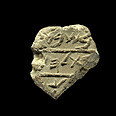The 15 century old mosaic, preserved in good condition & traced to between the 4th & 5th centuries C.E., “is unique due to the large number of motifs incorporated together,” says Dr. Yigal Yisrael from the Israel Antiquities Authority.
A splendidly colorful mosaic, some 1,500 years old, was discovered recently in an open field near Kibbutz Beit Kama, located in the Bnei Shimon Region Council in the northern Negev.

The colorful mosaic found near Kibbutz Beit Kama – Photo: Yossi Zeliger
The mosaic, which has been traced to somewhere between the fourth and sixth centuries in the Common Era, was discovered during an archeological dig conducted by the Israel Antiquities Authority before the paving of a new highway interchange.



 ng Herod, the Jewish proxy monarch who ruled Jerusalem and the Holy Land under Roman occupation two millennia ago. The exhibition, at the Israel Museum in Jerusalem, includes about 250 archaeological artifacts recently discovered on the Temple Mount in Jerusalem, at the Herodion summer palace, south of the capital, Jericho and other sites.
ng Herod, the Jewish proxy monarch who ruled Jerusalem and the Holy Land under Roman occupation two millennia ago. The exhibition, at the Israel Museum in Jerusalem, includes about 250 archaeological artifacts recently discovered on the Temple Mount in Jerusalem, at the Herodion summer palace, south of the capital, Jericho and other sites.








 Israeli New Shekel Exchange Rate
Israeli New Shekel Exchange Rate